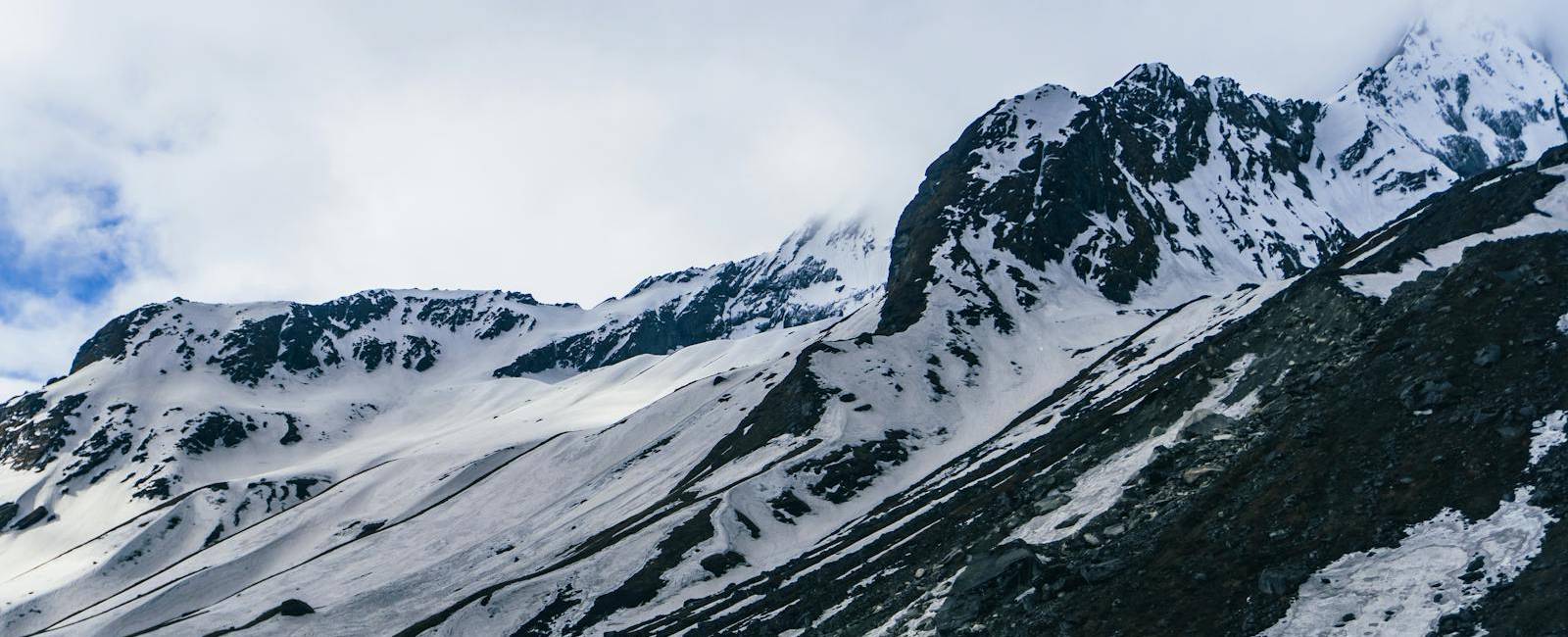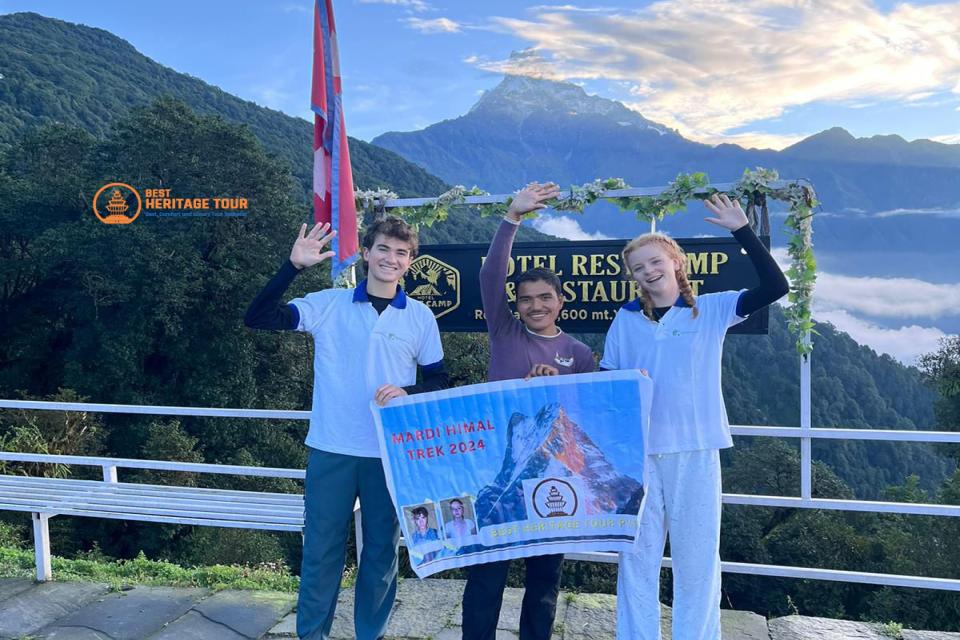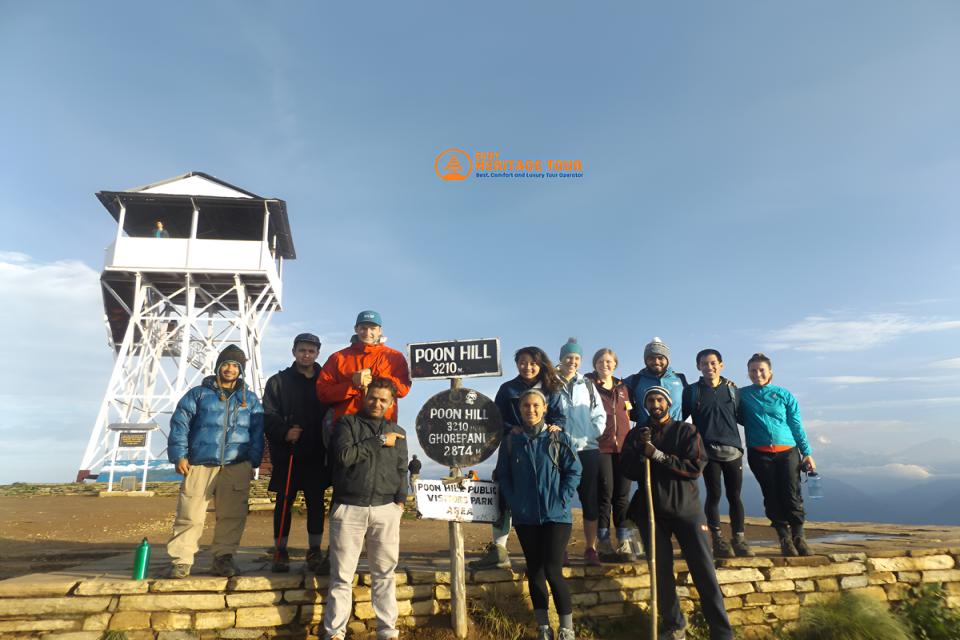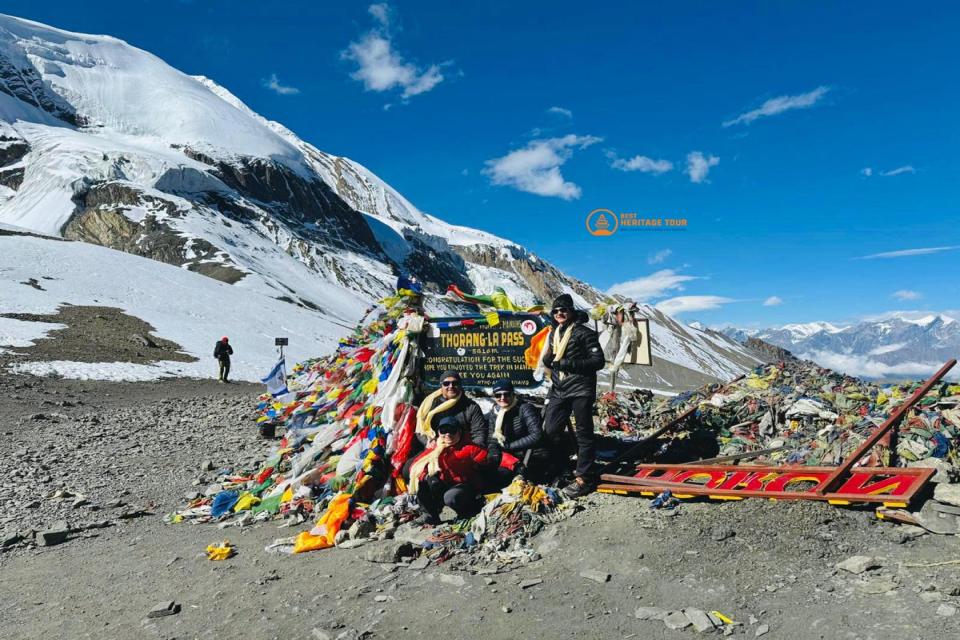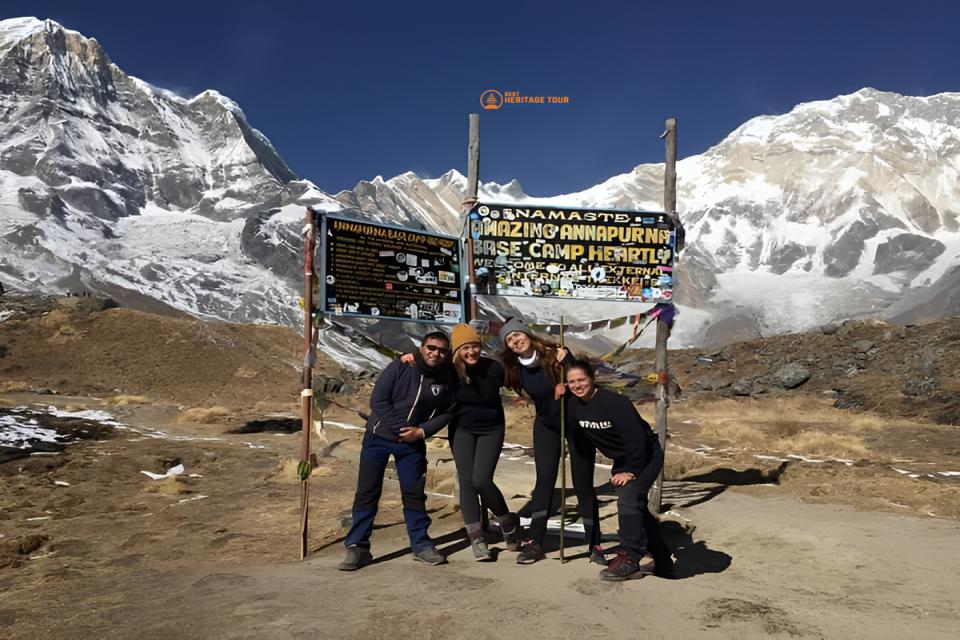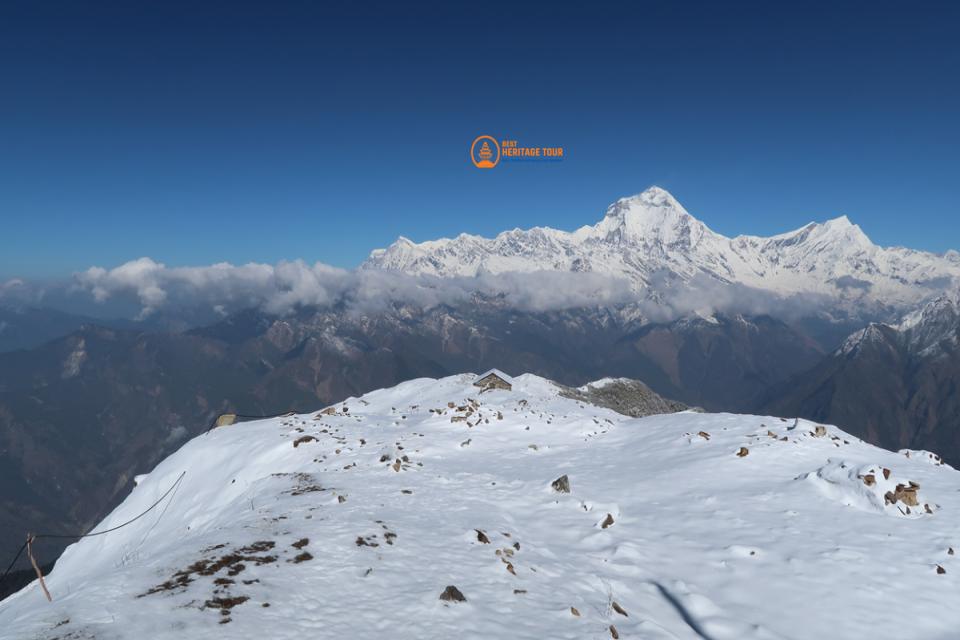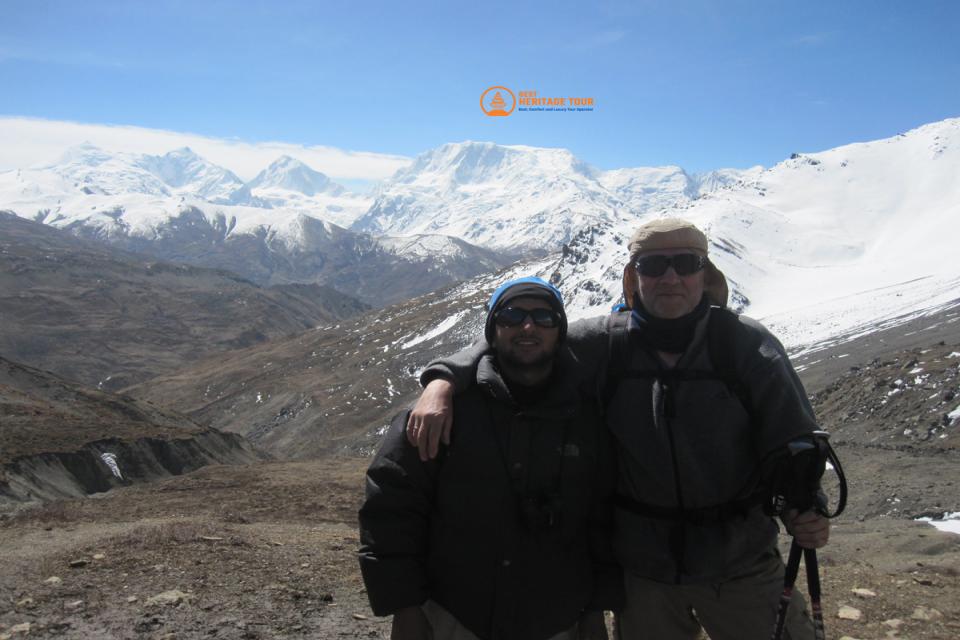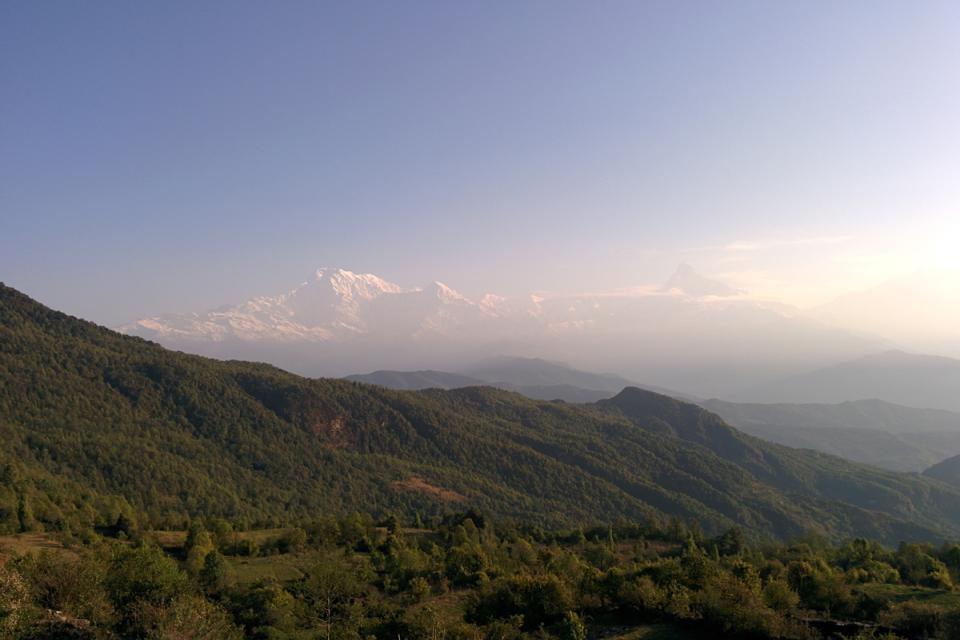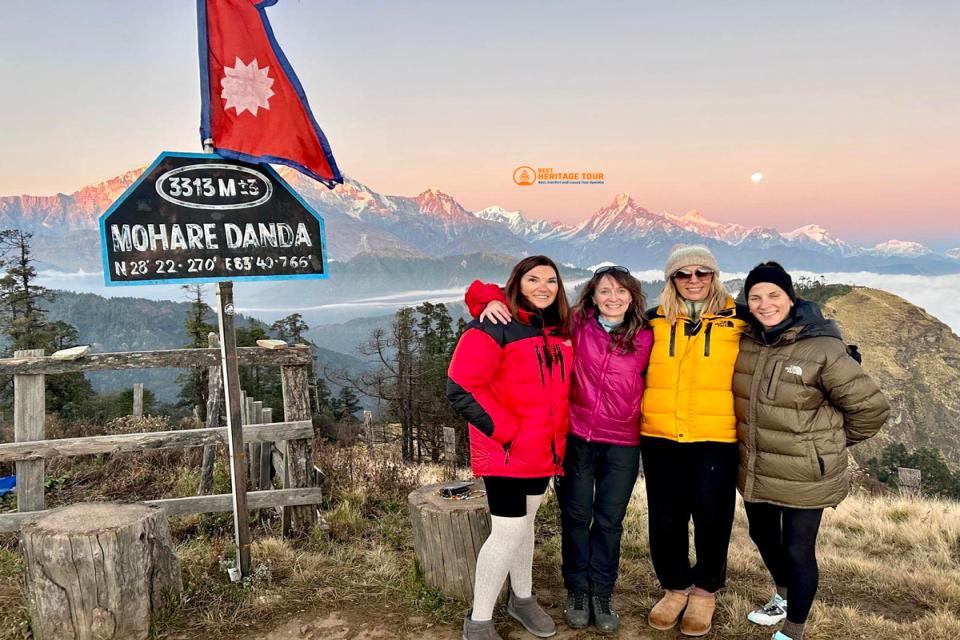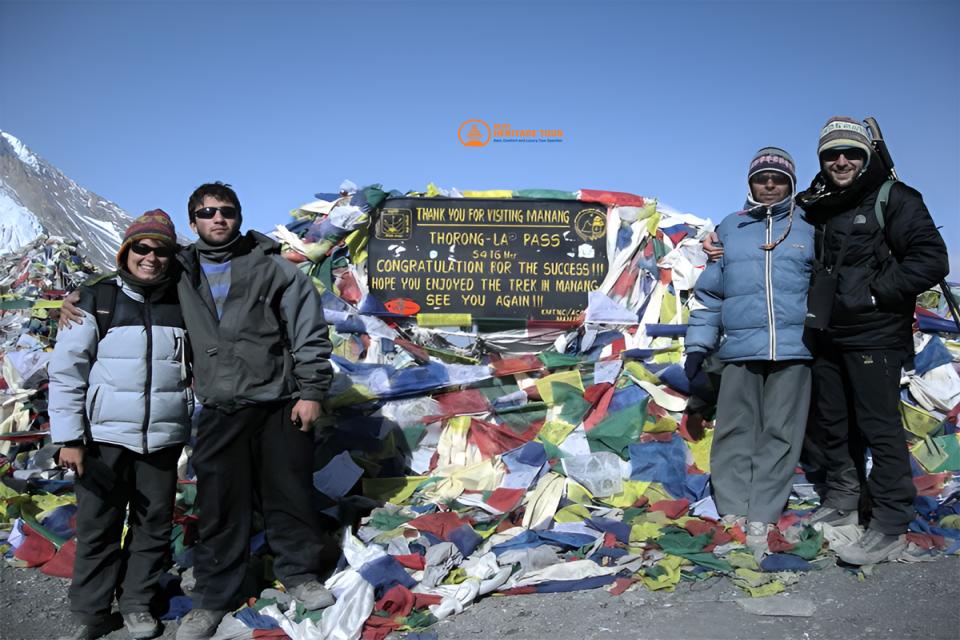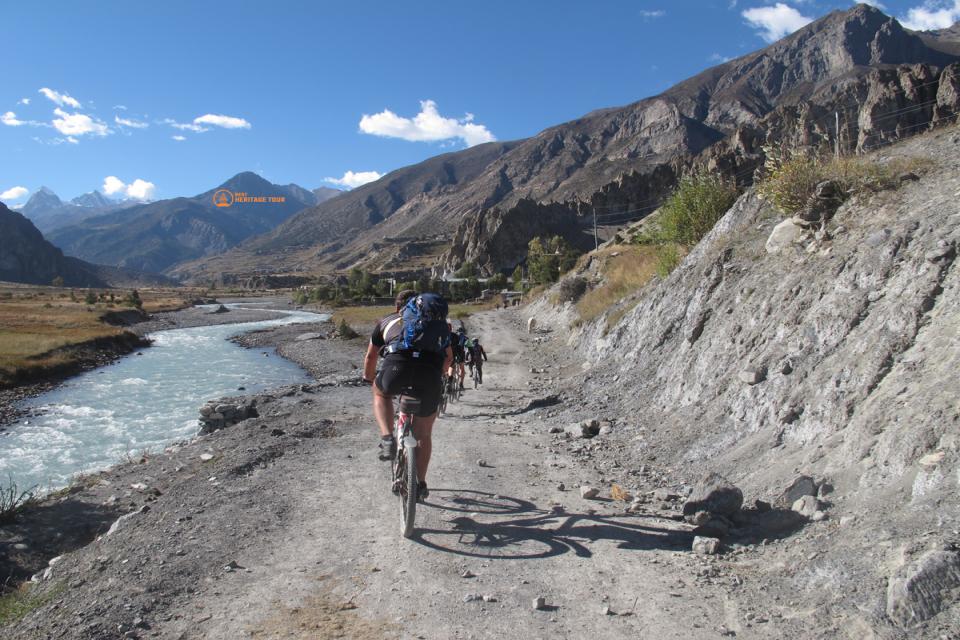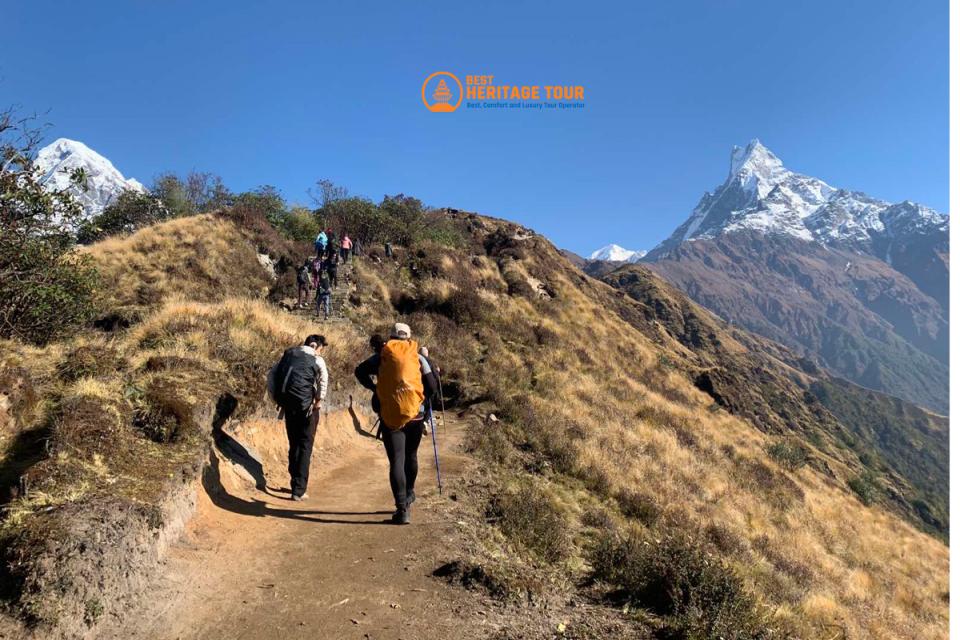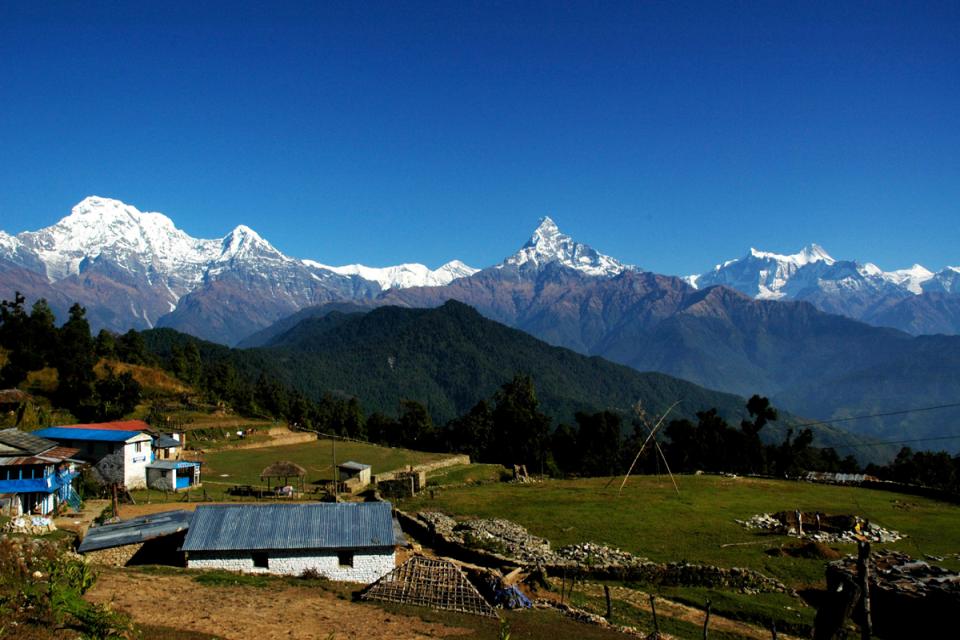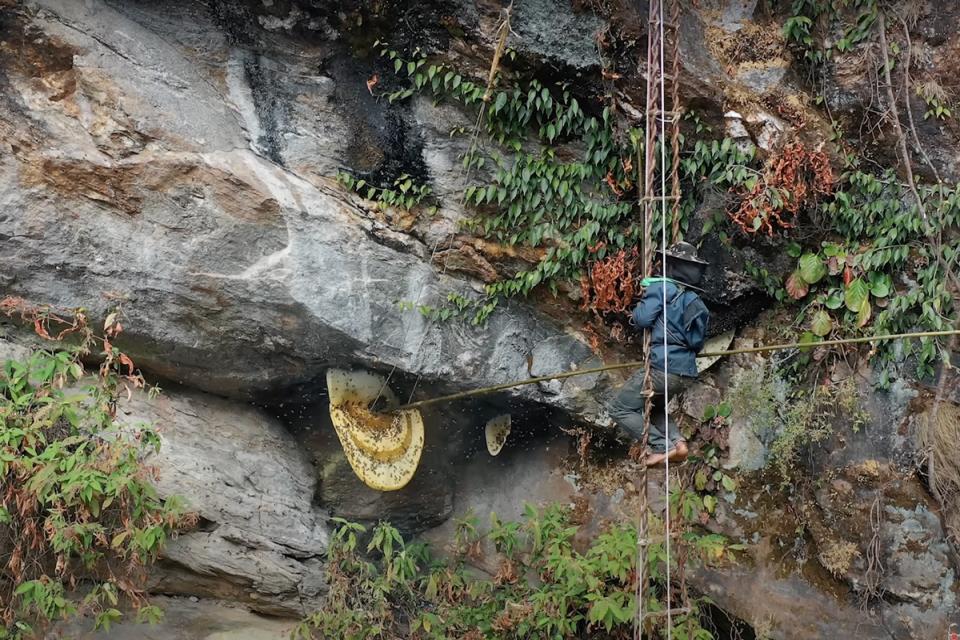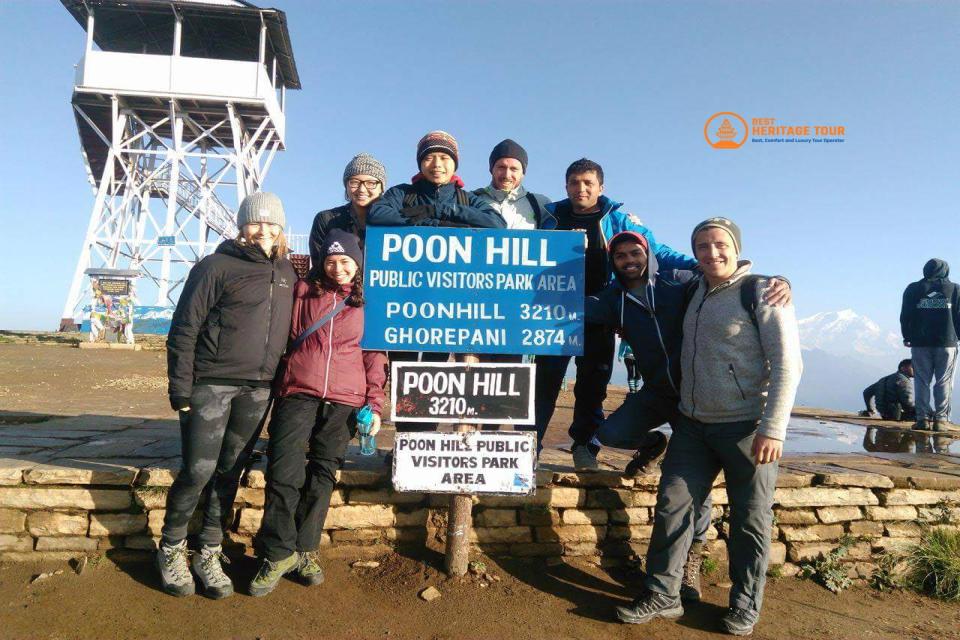Trekking in the Annapurna Region in 2025/26 isn’t just about conquering trails - it's about embracing nature, meeting kind-hearted locals, and reconnecting with something deeper within yourself. This region, located in central Nepal, is a crown jewel of the Himalayas. It offers a spectacular variety of treks that range from tranquil forest paths and charming hillside villages to dramatic high-altitude crossings and sacred glacial basins.
For decades, the Annapurna Region has drawn trekkers from across the globe with its breathtaking views of Annapurna I (8,091m), Machhapuchhre (Fishtail), Dhaulagiri, and more. Now, with improved infrastructure, more sustainable tourism options, and streamlined trekking permits, 2025/26 is shaping up to be the most exciting time to experience this iconic trekking destination.
From the legendary Annapurna Circuit Trek with Tilicho Lake to the soul-soothing Ghorepani Poon Hill Short Trek, this comprehensive guide will walk you through the best trekking routes, essential preparation tips, current regulations, and everything else you need to confidently plan your next big adventure in Nepal.
Why Trekking in the Annapurna Region is a Must in 2025/26
The Annapurna Region is more than just a popular trekking destination - it's a mosaic of cultural diversity, dramatic landscapes, and soul-stirring vistas. Each step of your journey offers a new experience: snow-capped peaks that touch the sky, waterfalls cascading over mossy cliffs, trails lined with blooming rhododendrons, and monasteries echoing with Buddhist chants.
Key Reasons to Trek Annapurna in 2025/26:
-
Unrivaled Scenery: From lowland rice terraces to the towering Annapurna massif, you’ll witness some of the most diverse topography in Nepal.
-
Cultural Immersion: You'll meet Gurung, Magar, and Thakali people whose hospitality and rich traditions add heart to your journey.
-
Ideal Weather Windows: Both spring and autumn bring crystal-clear skies, comfortable temperatures, and vibrant natural colors.
-
Tourism Upgrades: Trails are now better maintained, digital permit systems have been introduced, and teahouses are becoming more eco-conscious.
Whether you're a casual hiker or a seasoned mountaineer, Annapurna offers something for every level of adventure-seeker in 2025/26.
Essential Things to Know Before You Go
Planning ahead ensures your trek is not only memorable but also safe and enjoyable. Here are some must-know details before hitting the trails.
Best Seasons to Trek
The Annapurna Region has two ideal trekking windows:
-
Spring (March to May): Expect longer days, warmer weather, and forests bursting with rhododendron blossoms. It's the perfect time for photography and mountain views.
-
Autumn (September to November): Post-monsoon clarity means crisp air, dry trails, and the clearest Himalayan vistas.
Both seasons avoid extreme temperatures and heavy rainfall, making them optimal for all trekking levels.
Required Permits
Nepal mandates two main permits for most Annapurna treks:
-
ACAP (Annapurna Conservation Area Permit) - Costs around NPR 3,000 for foreigners.
-
TIMS (Trekkers' Information Management System) - Costs approximately NPR 2,000 and helps track trekkers for safety purposes.
These can now be obtained online or via authorized trekking agencies like Best Heritage Tour.
Fitness and Acclimatization
Even beginner-friendly treks require a moderate level of fitness. Here’s what to keep in mind:
-
Train in Advance: Start walking or hiking 2-3 months before your trek, especially if you’re planning high-altitude routes.
-
Acclimatization Days: Don’t skip them. Altitude sickness can affect even the fittest trekkers.
-
Hydrate and Eat Well: Energy levels and recovery improve when you stay hydrated and well-nourished.
What to Pack for Annapurna Region Trekking
Layered clothing is essential due to temperature variations. You’ll need:
-
Base layers (moisture-wicking)
-
Insulating jacket (down or synthetic)
-
Waterproof shell (jacket and pants)
-
Quality hiking boots and thick socks
-
Trekking poles, hat, sunglasses, and sunscreen
-
Water purification tablets and a personal first aid kit
Top Treks in the Annapurna Region in 2025/26
Here’s a breakdown of the most popular treks in the region, sorted by duration and style. Whether you’re after a quick scenic escape or an extended alpine challenge, the Annapurna Region delivers unforgettable Himalayan experiences.
A. Short Treks (2-5 Days)
1. Australian Camp Trek - 2 Days
This quick getaway from Pokhara is perfect for beginners seeking big mountain views with minimal effort. The trail winds through lush hills to a scenic ridge offering panoramic views of Annapurna and Machhapuchhre. Its short duration and accessibility make it ideal for families or tight schedules.
2. Panchase Trek - 4 Days
A peaceful trek through untouched forests, traditional villages, and sacred sites near Pokhara. Its quiet trails and spiritual landmarks make it a great alternative to busier routes. Panchase is ideal for travelers looking to blend nature, culture, and serenity.
3. Ghorepani Poon Hill Short Trek - 4 Days
Known for the iconic sunrise over the Annapurna and Dhaulagiri ranges, this trek offers jaw-dropping mountain views in just a few days. The climb to Poon Hill is rewarded with a 360-degree Himalayan panorama. It's one of the most scenic and accessible short treks in Nepal.
4. Mohare Danda Trek - 5 Days
This community-based trek supports local livelihoods while offering stunning ridge-line views. Less crowded than Poon Hill, it’s perfect for trekkers looking for tranquility and eco-tourism. Mohare Danda is unique for its commitment to sustainable and responsible travel.
5. Mardi Himal Short Trek - 4 Days
A hidden gem that takes you closer to Machhapuchhre than most other treks. Its trails pass through rhododendron forests, alpine ridges, and remote lodges. Mardi Himal stands out for its raw beauty and fewer trekkers on the path.
6. Annapurna Base Camp Short Trek - 5 Days
This condensed version of the ABC trek offers a high-altitude adventure into the heart of the Annapurna Sanctuary. You’ll reach towering Himalayan giants in just five days. It’s ideal for fit trekkers who want maximum altitude in minimum time.
B. Mid-Length Treks (6-10 Days)
1. Khopra Danda Trek - 6 Days
A quieter, panoramic trek offering dramatic views of Dhaulagiri and a side trip to the sacred Khayer Lake. The trail traverses remote villages and forested ridgelines. Its isolation and spiritual sites make Khopra a peaceful and profound trekking experience.
2. Poon Hill Trek - 7 Days
This extended route through Ghorepani, Tadapani, and Ghandruk deepens cultural immersion while still delivering the famous Poon Hill sunrise. With more time on the trail, you’ll experience diverse landscapes and village life. It’s a perfect blend of nature and tradition.
3. Mardi Himal Trek - 7 Days
A gradual journey through ever-changing terrain, from mossy forests to high alpine ridges with striking mountain views. The longer version allows proper acclimatization and a deeper experience. Mardi Himal offers solitude and close contact with Annapurna’s peaks.
4. Nar Phu Valley Trek - 9 Days
A restricted-area trek into a remote region of Tibetan-influenced villages and untouched valleys. Narrow canyons, ancient monasteries, and dramatic rock formations make this route unique. Nar Phu is ideal for adventurous trekkers seeking cultural and geographical isolation.
5. Annapurna Circuit Short Trek with Tilicho Lake - 9 Days
This version of the classic trek includes a high-altitude visit to Tilicho Lake, one of the world’s highest lakes. It packs intense scenery, changing landscapes, and local culture into a shorter timeframe. Perfect for trekkers wanting a condensed but challenging adventure.
C. Long Treks and Adventure Trails (10+ Days)
1. Annapurna Base Camp Trek - 11 Days
This full-length trek provides a well-paced approach to the Annapurna Sanctuary with more acclimatization and cultural stops. Natural hot springs, glacier valleys, and high-altitude vistas define the journey. It’s a classic for a reason - dramatic, diverse, and deeply rewarding.
2. Honey Hunting in Nepal - 10 Days
A cultural expedition into the Himalayan foothills where you’ll witness traditional honey-harvesting rituals on cliff faces. This rare experience combines trekking with ancient Gurung customs. It’s a once-in-a-lifetime adventure rooted in Nepalese heritage.
3. Annapurna Circuit Mountain Biking - 14 Days
One of the most exhilarating ways to explore the Annapurna Region, this biking adventure follows rugged trails and high passes. Crossing Thorong La on two wheels is a serious feat. Ideal for experienced bikers craving a high-altitude thrill.
4. Annapurna Circuit Trek with Tilicho Lake - 16 Days
The ultimate Annapurna adventure combining the iconic circuit with a detour to sacred Tilicho Lake. Expect dramatic scenery shifts from deep gorges to alpine deserts, and a high crossing at Thorong La Pass. It’s a physical and spiritual journey through Nepal’s wildest terrain.
Choosing the Right Trek for You in Annapurna Region
With so many incredible options in the Annapurna Region, it’s easy to feel overwhelmed. The key to choosing the perfect trek lies in aligning the trail with your fitness level, available time, comfort with altitude, and what kind of experience you’re after - be it cultural, scenic, spiritual, or physically challenging.
Here’s how to narrow it down:
For Beginners
If you're new to trekking or hiking at altitude, start with a short and relatively easy trek that still offers stunning Himalayan views. Treks like the Australian Camp Trek, Panchase Trek, and Ghorepani Poon Hill Short Trek are perfect for getting a taste of the Annapurna Region without overexertion. These treks typically range between 2-5 days, have moderate elevation gains, and offer comfortable teahouse accommodation. Plus, you'll have plenty of cultural interaction and scenic viewpoints without needing prior trekking experience.
For Mid-Level Trekkers
If you've done a few hikes or moderate-altitude treks before, you're ready for more immersive experiences like the Mardi Himal Trek, Mohare Danda Trek, or Khopra Danda Trek. These 6-10 day treks offer a richer adventure - combining longer distances, varied terrains, and cultural depth. You’ll trek through rhododendron forests, stay in traditional villages, and gain access to lesser-known trails while still enjoying manageable daily walking hours.
For Advanced Trekkers
If you’re physically fit, have experience trekking at altitude, and are looking for a challenge, the longer and more remote trails will reward you immensely. Treks like the Annapurna Circuit, Tilicho Lake Trek, or Nar Phu Valley Trek involve high mountain passes (like Thorong La at 5,416m), longer itineraries (10-16 days), and exposure to diverse ecological and cultural zones. These treks require acclimatization, endurance, and sometimes logistical planning - but they offer the ultimate Himalayan experience.
Solo or Group Trekking?
In recent years, Nepal has implemented stricter safety regulations for trekkers, especially in remote and high-altitude areas. As of 2023, solo trekking without a licensed guide is prohibited in most regions, including parts of the Annapurna Conservation Area. This is both to ensure trekker safety and to support local employment.
If you're a solo traveler, don't worry - you can still enjoy a solo-style experience with a guide or by joining a small group trek. In fact, many find that having a guide enhances the journey through cultural interpretation, local insights, and practical support during the trek. Porters can also be hired to lighten your load and allow you to enjoy the views and trails more comfortably.
Group treks are a fantastic option if you enjoy shared experiences, meeting fellow travelers, and having structured logistics taken care of. These are often more budget-friendly, especially for longer treks, and offer a sense of community that can be especially rewarding in challenging conditions.
Whether you trek solo with a guide or join a group, make sure to go through a government-registered trekking agency like Best Heritage Tour. This ensures your permits, accommodations, and transportation are handled properly and you’re supported throughout your journey.
How Trekking in Nepal is Evolving in 2025/26
Trekking in Nepal has transformed significantly over the past few years:
-
Improved Trails: New steps, bridges, and route markers make trails safer and more accessible.
-
Eco-Friendly Teahouses: Lodges are using solar power, offering biodegradable products, and managing waste more effectively.
-
Digital Permits & Mapping: Apply online for permits, and use GPS-enabled apps like Maps.me or Gaia GPS to stay on track.
-
Stronger Regulations: Licensed guides, environmental protocols, and registration checkposts ensure better trekker safety.
Safety and Health Tips
Safety in the mountains should never be underestimated.
-
Acclimatize Properly: Never climb too quickly. Include rest days.
-
Hydrate & Eat Carbs: Your body needs fuel at altitude.
-
Know the Signs of AMS: Headache, nausea, dizziness. Descend immediately if symptoms worsen.
-
Get Insurance: Ensure it covers high-altitude trekking and helicopter rescue.
-
Emergency Contacts: Keep local embassy and tour operator numbers handy. In remote areas, satellite phones may be available through guides.
Budgeting Your Annapurna Adventure
Trekking in Nepal can suit all budgets - from backpacker-friendly to fully guided luxury trips.
Estimated Daily Costs:
-
Accommodation: $5-$20 (teahouse style)
-
Food & Water: $15-$30
-
Guide/Porter: $25-$40 per day
-
Transport: $10-$100 (buses, jeeps, or flights)
-
Permits: ~$50-$100 total
Pro Tips:
-
Carry local cash; there are no ATMs on the trails.
-
Bargain respectfully.
-
Go through licensed trekking agencies like Best Heritage Tour for transparency and safety.
Responsible Trekking and Cultural Etiquette
Trekking responsibly helps preserve Nepal's natural and cultural beauty for generations to come.
-
Support Local Communities: Buy local crafts, stay in village lodges, and hire local guides.
-
Respect Local Customs: Dress modestly, greet locals with “Namaste,” and remove shoes when entering homes or temples.
-
Minimize Waste: Use refillable bottles and avoid plastic-wrapped snacks.
In Conclusion: Your 2025/26 Annapurna Adventure Awaits
The Annapurna Region is more than just a destination - it’s an experience that touches your heart, tests your limits, and fills your memory with mountain magic. Whether you take a quick escape to Poon Hill or challenge yourself on the Annapurna Circuit, trekking in Nepal in 2025/26 will be one of the most rewarding journeys of your life.
Ready to Trek? Contact Best Heritage Tours
For customized trekking packages, expert guides, and seamless logistics, reach out to:
Phone/Whatsapp: +977-9851149197
Email: info@bestheritagetours.com / bestheritagetour@gmail.com
Website: www.bestheritagetours.com
Office: Thamel Marg, Kathmandu, Nepal
Let Best Heritage Tours help you craft your perfect Annapurna experience in 2025/26!
Author: Best Heritage Tour
Date: 28th July, 2025

